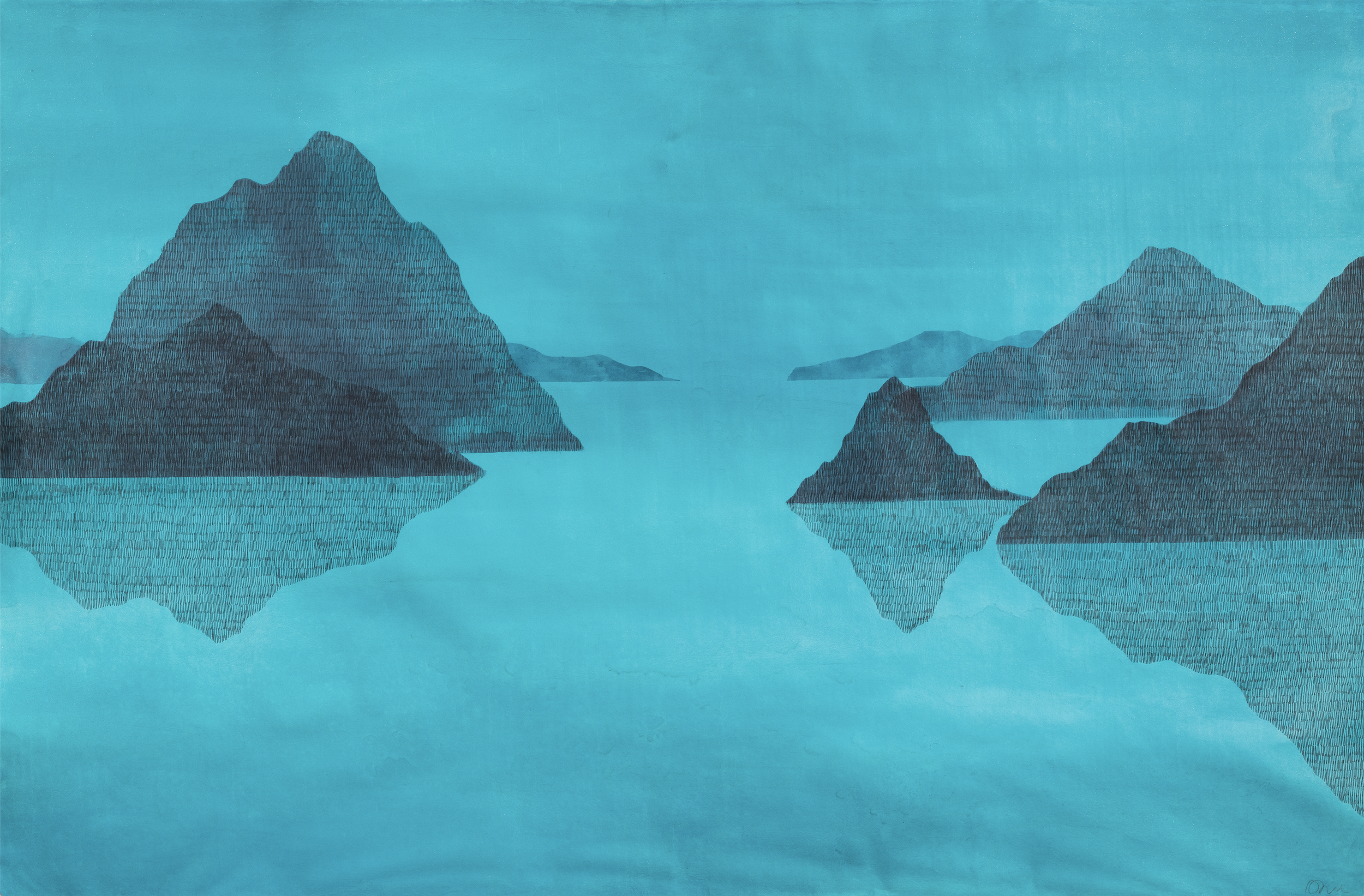Blue of Distance
In this ongoing body of work, I am interested in exploring the romanticized notions of wilderness, specifically focusing on the sea as a persistently foreign body, it is a wilderness that civilizations have attempted to comprehend through the ages. From centuries of sailing unchartered waters to more recent technologies of optics and cartography, it can never be fully understood. The inspiration for these pieces is the Pacific Ocean in Northern California, where the fog is also a prominent additional presence. The title for this body of work is credited to Rebecca Solnit’s essay in A Field Guide to Getting Lost. One can be in sea, or in the fog, but not really know it. There are no edges and depths, but always a place just a little farther beyond than where one may be. It’s not only a visual perception, but also an emotional one, an overwhelming feeling of the vastness of what lies before and ahead.
The Blue of Distance series is my physical attempt at capturing the feeling of vastness though landscape, in a space that is both empty and full. Initially, these cut paper islands appear to be fragments of landscapes that reference familiar natural forms, but the trees and land formations which emerge from the repetitious drawn marks assume a more mysterious, almost anthropomorphic quality. The elusiveness of forms is contrasted by the persistence of making. I use repetition to mark time’s passing, building elaborate surfaces covered with minute hand embellishment, in this case, small paper cutouts and marks made with carbon paper. The carbon paper is used as a mediator between myself and the paper’s surface. The mark made by the carbon is soft and remains hidden until the carbon paper is removed. In these drawings, the dichotomy between empty and full, solid and soft, past and present manifest themselves through material, mark and image.









